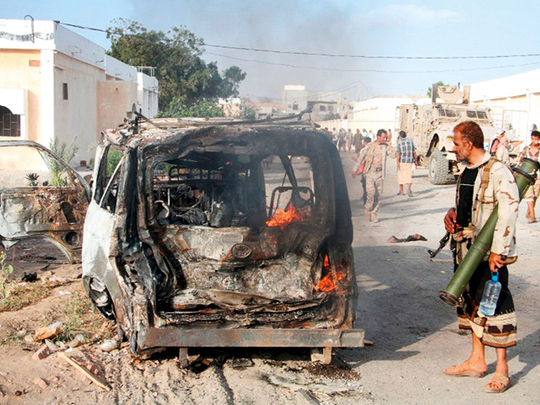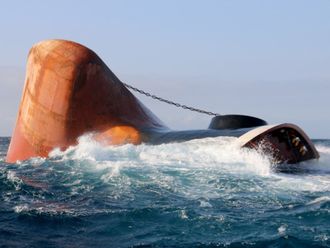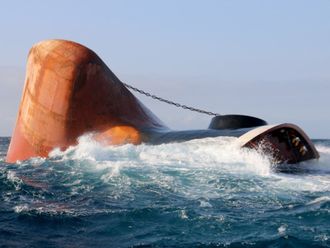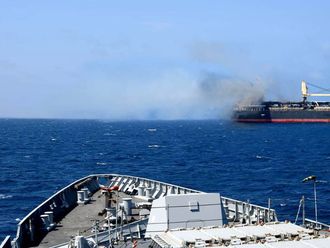
MANAMA, Bahrain — The United States has tripled the number of air strikes this year against Al Qaida’s branch in Yemen, one of the deadliest and most sophisticated terrorist organisations in the world. US allies have pushed the militants from their lucrative coastal strongholds. And the Pentagon recently boasted of killing key Al Qaida leaders and disrupting the group’s operations.
Yet, top US counterterrorism official and other US intelligence analysts concede the campaign has barely dented the terrorist group’s ability to strike US interests.
“It doesn’t feel yet that we’re ahead of the problem in Yemen,” Nicholas J. Rasmussen, who stepped down this month after three years as director of the National Counterterrorism Center, said in an interview. “It continues to be one of the most frustrating theatres in our counterterrorism work right now.”
Even as President Donald Trump lauds the demise of Daesh’s self-proclaimed caliphate in Iraq and Syria, the threat of a terrorist attack — with the most commonly feared target a commercial airliner — emanating from the chaotic, ungoverned spaces of Yemen remains high on the government’s list of terrorism concerns. The group formally known as Al Qaida in the Arabian Peninsula, or AQAP, has dogged Trump since his first days in office, when the president authorised an ill-fated raid on an Al Qaida hideout that left one member of the Navy’s elite SEAL Team 6 dead.
Yemen, one of the poorest nations in the Arab world, has been convulsed by civil strife since the Iran-allied Al Houthi militias from the north, stormed the capital, Sana’a, in 2014 and then ousted the government of President Abd Rabbo Mansour Hadi, the Americans’ main counterterrorism partner.
In March 2015, Saudi Arabia and a coalition of Arab nations began a military campaign aimed at pushing back the Houthis and restoring the government. That campaign has so far failed to do so and has instead caused the world’s most severe humanitarian crisis, the worst outbreak of cholera in contemporary history and widespread child malnutrition.
Al Qaida exploited the security vacuum and in 2015 took control of large parts of land in the south, including Al Mukalla, Yemen’s fifth-largest city and a major source of port revenue.
The Al Qaida wing in Yemen remains so nefarious in part because the group has spent years inventing explosives that are difficult to detect, including trying to disguise bombs in devices like cellphones. It has tried at least three times to blow up US airliners, without success. And its most notorious bomb maker, Ebrahim Hassan Al Asiri, remains at large and is training proteges, intelligence officials say.
“Still the world’s most dangerous man,” David H. Petraeus, the former CIA director and a retired four-star general, said of Al Asiri at a security conference here this month.
With no real functioning government in Yemen, the United States does not have the Special Operations forces or CIA presence on the ground that it had before Yemen’s civil war, US counterterrorism officials say, and thus lacks the deeper understanding of the situation there that would give officials confidence about Al Qaida’s plotting.
“We can’t distinguish between people who are still pretty serious threats and guys who are just working with them because they need help,” said Gerald M. Feierstein, a former US ambassador to Yemen.
Since Feb. 28, as part of Trump’s intensified campaign against terrorists, the United States has conducted nearly 130 airstrikes in Yemen — mostly against Al Qaida militants with about 10 against Daesh fighters, according to the Pentagon’s Central Command. That is up from 38 strikes in 2016.
The Central Command boasted in an unusual statement this month that the airstrikes and Special Operations raids had killed several important Al Qaida leaders.
The attacks “have put pressure on AQAP’s network, severely limiting their freedom of movement, disrupting the organisation’s ability to recruit and train, and limiting AQAP’s ability to plan and execute external operations,” Lt. Col. Earl Brown, a Central Command spokesman, said in an email soon after the command issued an assessment of the campaign on Dec. 20.
In the south, more than 4,000 Yemeni troops backed by UAE forces recently announced the death or capture of several Al Qaida militants in Abyan and Shabwa provinces. Yemeni government security forces have been deployed in most of former Al Qaida strongholds but the militants still exist in Baydha and Shabwa’s Sayed district.
The Yemenis have also captured some important Al Qaida operatives. Their interrogations have given valuable insights into the insurgents’ leadership hierarchy, propaganda plans and local networks, a US official said.
“We have disrupted AQAP, but I remain concerned,” Gen. Joseph L. Votel, head of the Central Command, said in an interview during the Manama Dialogue security conference here. “This is an organisation that’s proved resilient over time. This is an extraordinarily dangerous element of Al Qaida.”
Lora Shiao, acting director of intelligence for the National Counterterrorism Center, told a Senate hearing this month that the Al Qaida branch “continues to exploit the conflict in Yemen to gain new recruits and secure areas of safe haven, contributing to its enduring threat.”












